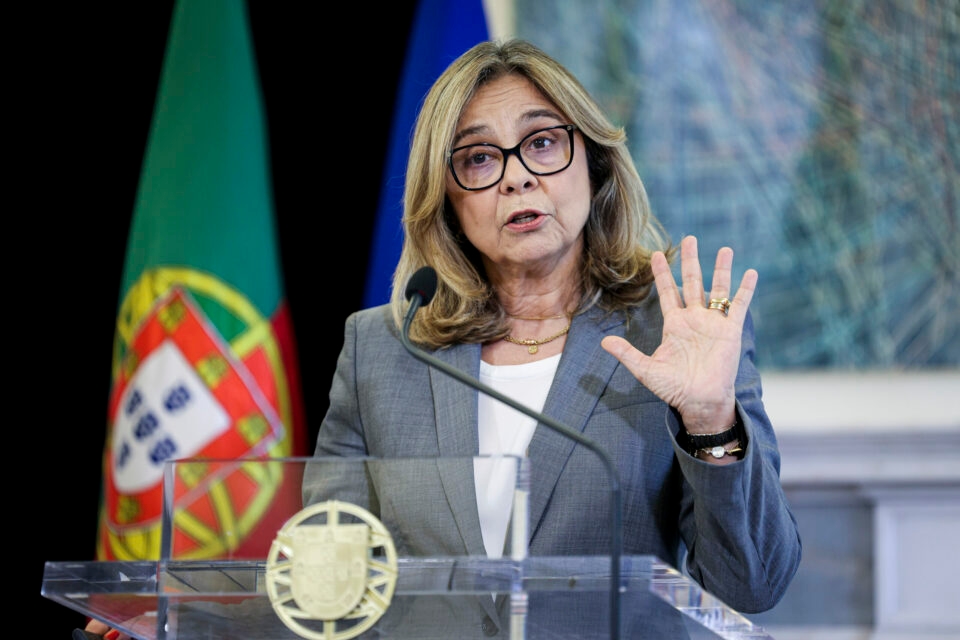LAAF. Jewels, paintings, oratories and marble lions

The dialogue between times and practices has also been reformulated over the years. Still duly protected, the works from the Lameiros de Calapez series will be exhibited right at the entrance. They are not available for sale but represent a timeline that allows “comparison with recent works”, and are a harmonious reflection of this encounter between the context of the antique dealer and the gallery that has been getting closer over the last 10, 15 years. “This started with some antique dealers, who already had pieces of contemporary art by dead artists. It is a European, or even Western, trend that is gaining proportions. For example, TEFAF , which is the main fair in Maastricht, had works for classical museums and recently has had a profusion of contemporary works. The prices are very high, it is a whole new level of the art market”, he specifies, pointing to the price war that is stimulating the market, in a game that is also speculative and has turned the rules upside down. “People come more for the value game than for the interest in the works. But it’s inevitable. It comes with all the fairs.”

Joana Aranha Studio
Not only has the desire of collectors been redefined, with the recurring surrender of taste to the commodity factor, but a fair of this nature also presents countless and diverse demands to the eye. The interplay of styles and the coexistence of pieces of different natures and materials is a trend that has gradually been intruding into national choices and houses, breaking down barriers. “In Portugal it is recent, but people have finally begun to realize that an old piece looks beautiful with something of design, with a contemporary painting,” recalls the director of APA, which keeps its collection of unique accessories at number 67 Rua da Escola Politécnica, also present at LAAF.

Kukas's jewelry pieces occupy one of the 35 display cases at Cordoaria
Despite the Portuguese “resistance to change”, there is a growing openness, which coexists with the gaze and presence that comes from outside, which is usually more trained, stresses Calapez, and is somehow enhanced by the fact that the capital has been attracting a significant number of foreigners who have come to settle down. “In the first few days of the fair, you can feel that there is a group of people who, by the way they look at the pieces, their gaze is not raw, they have already seen things and are comparing. Foreigners here are very diverse. They are a minority with economic power, but they do have a different view of their museums. They don’t even have to be big collectors, they may just be interested in having objects in their home, and they come to see. The only way to educate the eye is to see”.

From triptychs to sculptures, from tabernacles to photographic projects of sacrifice, there is no shortage of religious references
For the organization, attracting a greater number of international visitors would be important for the fair, but Isabel argues that the format of the event would have to be rethought so that the travel costs do not represent a loss. “The members want to internationalize, but they also want fairs that last for many days. My store is closed for at least 15 days. For those who come from abroad, it is at least three weeks, and that is not attractive. We are not such an attractive market to make up for a very long fair”.

The Tricana rugs, by Miguel Baeta and Celal Öztürk
If your profile falls short of the typical collector’s profile, fear not. There’s no need to give up on your visit due to a possible lack of qualifications in the subject, but you should know that you should prepare a small nest egg if you don’t want to leave empty-handed. “In Portugal, we have few collectors, of any kind. But there are many people who, although they are not collectors, like to be surrounded by the objects they like.” All around, the appeal of beauty and rarity will not be overlooked. From the pleasant surprise of an unknown portrait of D. João V (José Sanina Antiquário) to the D. José cutlery set in rosewood (São Roque, Antiguidades e Galeria de Arte), not to mention a precious world of pins, pendants, bracelets and rings (J. Batista), you’ll probably need to do without your skateboard, so you can linger at your leisure in every corner.
The fair's scenography is once again in the hands of the OitoemPonto studio. In addition to the exhibition, LAAF also promotes Conversations About Art , with a program of debates and editorial launches that bring together artists, collectors, institutions and the public.
LAAF, Cordoaria Nacional, Avenida da Índia, Every day, from 3:00 pm to 9:00 pm. On Fridays, from 3:00 pm to 11:00 pm. Single ticket 15 euros; double ticket with catalogue 25 euros.
observador





